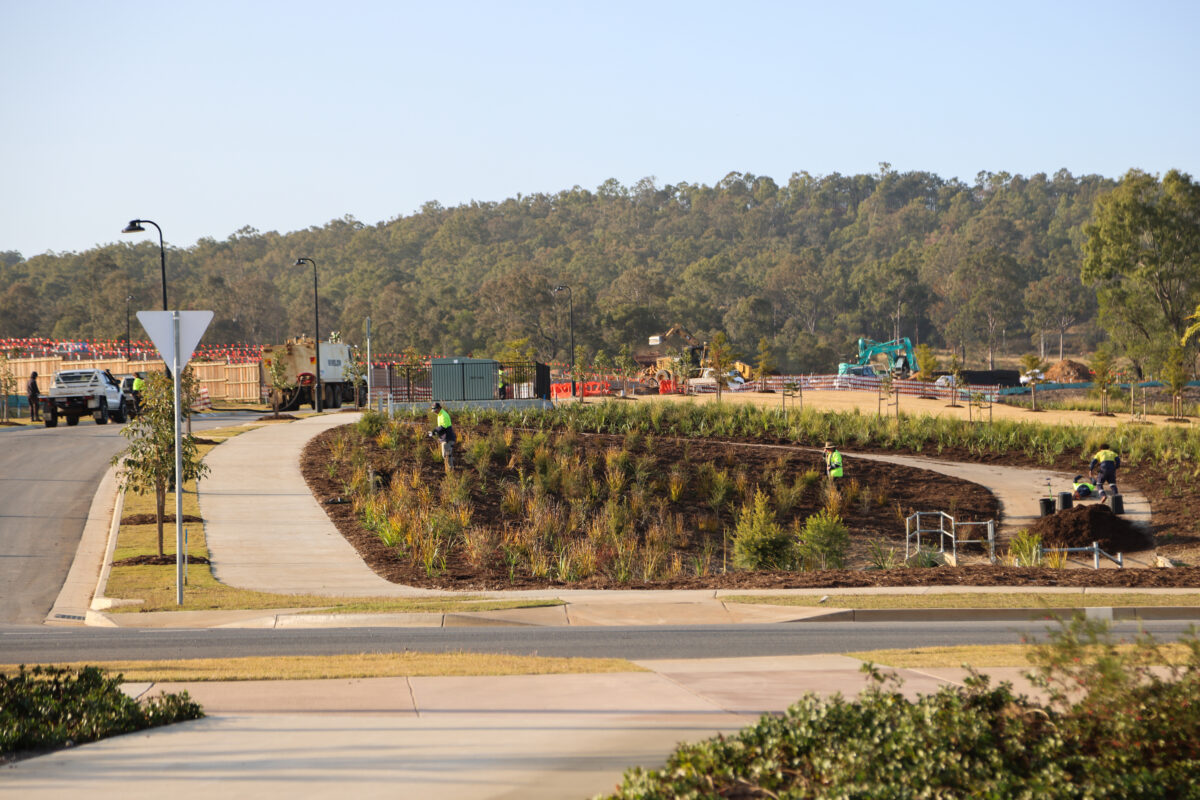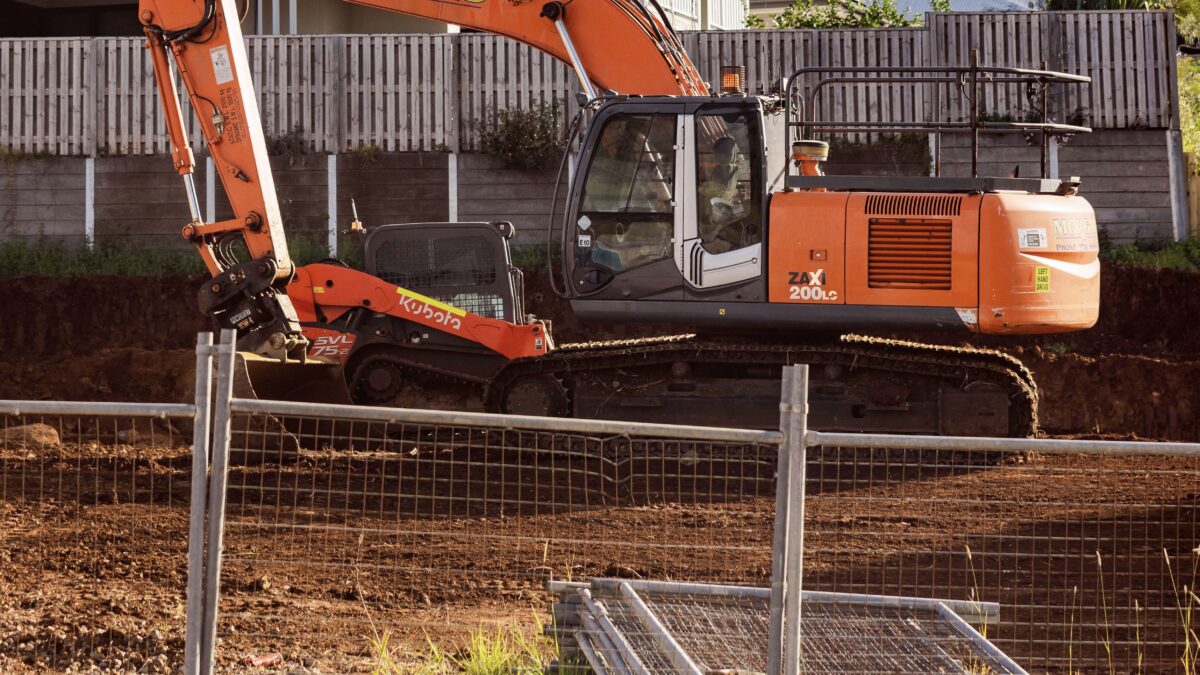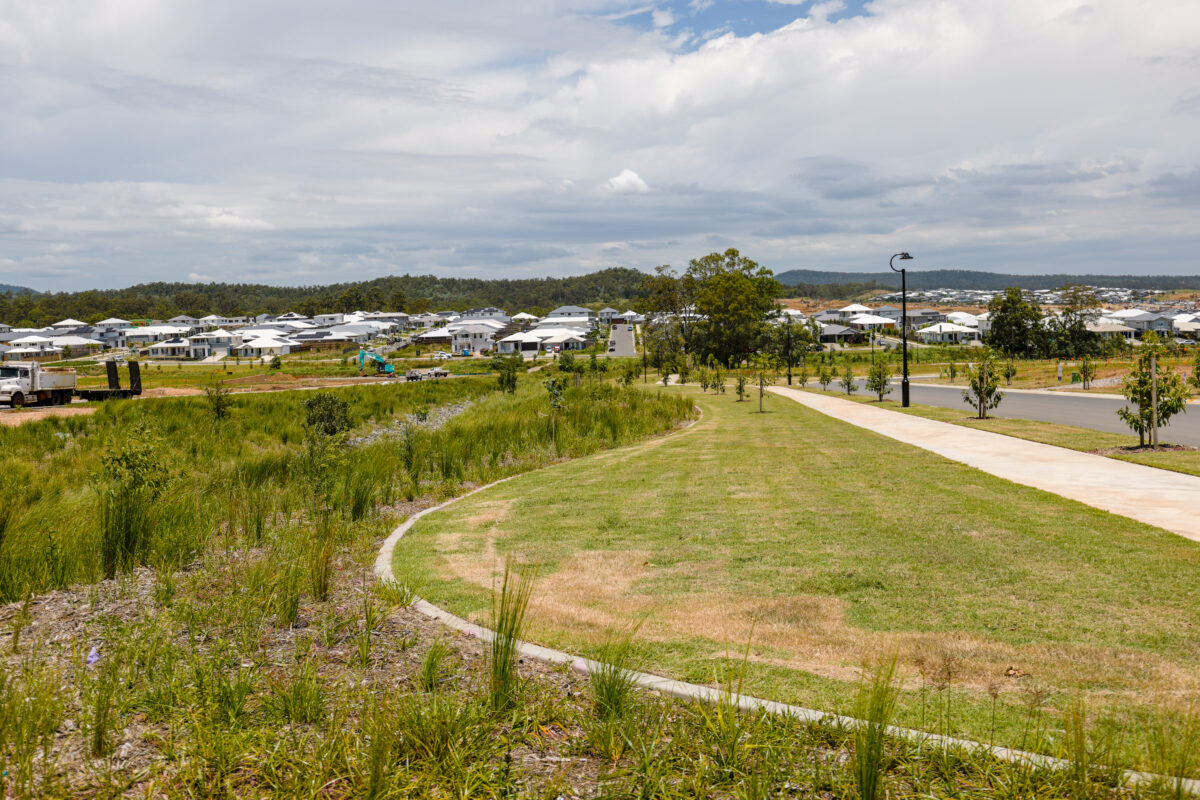
If you’re about to build your own home, chances are you’ve come across the term “civil construction” – and maybe wondered what it actually involves.
Put simply, civil construction is the early-stage work that gets your land ready for building. It lays the foundation (literally) for your future home by preparing essential infrastructure like water, gas, sewer, roads, and electrical services.
Given the recent extreme weather events across Eastern Australia, now’s a good time to talk about how civil construction works and what might affect its timing. To help you feel informed and confident, we spoke with Intrapac Property’s experienced development managers to break down the process and what to expect.
What is Civil Construction?
Essentially, civil construction is the early process of preparing a site for homes, ensuring a solid foundation for you to commence the next stage of life in your new home. There are roughly 7 primary stages within the process:
1. Earthworks – Preparing the Ground
The journey begins by shaping the land to get it ready for what’s to come. This stage includes digging, levelling and preparing the natural surface of your future community. It ensures the site is in the right condition to install essential services like plumbing and electrical, as well as roadways that will connect your home to the broader neighbourhood.
2. Sewer and Stormwater Drainage – Laying the Essentials
This might not be the most exciting part of building, but it’s one of the most important. With the site now prepared, we install a network of underground pipes that manage both wastewater and stormwater. These pipes form the hidden infrastructure that connects your home to the broader system, keeping everything flowing smoothly and safely.
3. Water and Gas* – Getting Future-Ready
With sewerage complete, another layer of underground pipework is installed — this time for water and gas. These connections make sure your home can access clean water and reliable energy once it’s time to build.
*Disclaimer: This excludes Victoria, where new homes cannot connect to gas due to state regulations.
4. Roads and Kerbs – Streets Start Taking Shape
After the essential underground work is complete, the streetscape begins to take shape. A base layer of rock (known as subgrading) is laid, followed by roads, kerbs and gutters. These features help with drainage and provide structure for your community.
5. Electrical and Telecommunications – Staying Connected
This stage focuses on services like electricity and high-speed internet. We work closely with NBN Co to install all the required cabling and infrastructure to ensure homes will be connected to power, phone, and data services.
6. Asphalts, Footpaths and Topsoiling – Final Touches to the Ground
Now comes the finishing work. Asphalt is laid, footpaths are poured, and topsoil is added to level the land and prepare it for future landscaping. These final steps help shape the neighbourhood and get your lot ready for building.
7. Practical Completion – You’re Almost There!
Congratulations – you’ve made it through the civil construction phase! In this final stage, all works are reviewed and formally signed off to receive what’s known as the Statement of Compliance (or Plan Sealing). This is the final tick of approval needed to generate your land title, bringing you one step closer to building your dream home.
Following this final step, you’re ready to commence valuations, soil testing and conduct a site survey to secure your title. Once secured, your home is ready to build!
What Can Affect Civil Construction Timing?
Even with careful planning, there are a few factors that can impact the civil construction timeline. Here’s what to be aware of:
Weather Conditions
Weather is one of the biggest — and most unpredictable — causes of delay. In March, for example, Cyclone Alfred brought damaging winds and heavy rainfall to Australia’s east coast. Storms like this are rare, but they can stop work on site and affect progress.
To reduce the risk of weather delays, our teams try to schedule key works like earthmoving or trenching during dry seasons. However, when unexpected rain or flooding hits, work must pause until the ground is safe and dry. In some cases, damage may require repairs before work can resume.
If you think recent weather may have affected your lot, it’s always best to get in touch with your dedicated contact for more information.
Project Complexity & External Factors
No two developments are the same, so timing can vary depending on a few things, including the size of the project, how many lots are involved, and the complexity of the site.
Other factors like council approvals, legal requirements, or environmental conditions can also play a part. For instance, a change in planning legislation or the discovery of environmental sensitivities might lead to further assessments or added time on site.
The Bottom Line
While delays can happen, the civil construction process is necessary and is carefully managed by experienced teams who are there to make sure everything stays on track as much as possible.
Understanding each stage – and the factors that might impact timing – helps you feel informed and empowered as you move closer to building your dream home.


